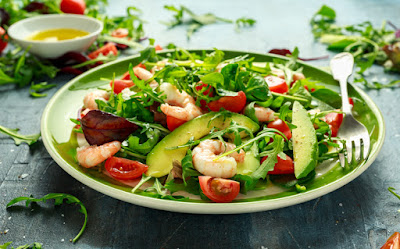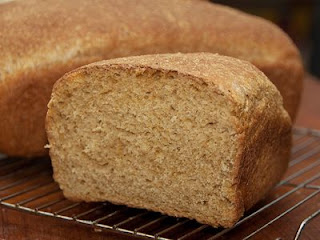Cakes
When we broach the topic of cake, we start getting into passionate territory.
People define important moments in life, like birthdays, weddings and holidays, with cake and specific cake variety like cheesecake, chocolate cake, angel food cake and fruit cake inspire strong feelings of likes and dislikes.
CAKE is a form of sweet food made from flour, sugar, and other ingredients, that is usually baked. In their oldest forms, cake were modification of bread but cakes now cover a wide range of preparations that can be simple or elaborate, and that share features with other desserts such as pastries, meringues, and pie.
The most commonly used cake ingredients include flour, sugar, eggs, butter or oil or margarine, a liquid and leaving agent such as baking soda or baking powder.
Common additional ingredients includes, dried fruits, candied, fresh fruits, nut, cocoa and extracts such as vanilla, with numerous substitutions for the primary ingredients.
Cakes can also be filled with fruit preserves, nuts or dessert sauces (like pastry cream), iced with butter cream or other icings and decorated with marzipan, piped borders or candied fruits.
The word CAKE is Viking origin, derived from the Norse work "KAKA" and denotes a baked flour confection sweetened with sugars or honey.
The First cakes made are actually quite different from the ones we eat today. Interestingly, the ancient Egyptians were the first culture to exhibit baking skills and during Ancient Times the cakes were more bread-like in appearances and sweetened with honey.
 The Greeks also had an early form of cheesecake, while the Romans development versions of fruitcakes with raisins, nuts and other fruits.
The Greeks also had an early form of cheesecake, while the Romans development versions of fruitcakes with raisins, nuts and other fruits.
The ancient Greeks called cake "plakous" which was derived from the word "flat" "plakoeis".
It was baked using flour mixed with eggs, milk, nuts and honey. They also had a cake called "satura", which was a flat heavy cake.
During the Roman period, the name for cake became "placenta" which was derived from the Greek term. A placenta was baked on a pastry base or inside a pastry case.
The Romans probably perfected the practice of adding yeast as a leavening agent to cake and later the Italians in the 16th century developed the art of leavening without yeast by adding whipped eggs to butter.
Both method created a lighter cake but was time consuming and could be tricky, by the mid - 1800s, the introduction of bicarbonate soda and baking powder made it easier to bake an airy cake quicky and consistently.
Supply and demand played a part in it's genesis. The precursors of modern cakes were first baked in Europe sometime in the mid - 17th century. This is due to primarily, advances in technology, more reliable ovens, manufacture or availability foods molds and ingredients.
At that time, cake hoops-round molds for shaping cakes that were placed on flat baking trays were popular.They could be made of metal, wood or paper. Some were adjustable. Cake pans were sometimes used.
It was not until the middle of 19th century that cake as we know it today (made with extra refined white flour and baking powder instead of yeast) arrived on the scene. The treat became popular and considered a luxury as sweet ingredients like sugar and chocolate were expensive.
During the Great Depression, there was a surplus of molasses and the need to to provide easily made food to millions of economically depressed people in the United States.
One company patented a cake _ bread mix to deal with the economic situation and thereby established the first line of cake in a box.
In so doing, cake as it is known today, became a mass produced goods rather than a home or bakery made.
Later, during the Post - War Boom, other American companies(notably General Mills) developed this idea further, marketing cake mix on the principle of convenience, especially to housewives.
When sakes dropped heavily in the 1950s, marketers discovered the baking cakes once a task at which housewives could Exercise skill and creativity had become dispiriting.
This was a a period in American ideological when women, retired from war time labor force, were confined in the domestic sphere.
Today cake is obviously used to celebrate occasion like weddings, engagements, anniversaries, holidays and of birthdays.
But when did we actually start celebrating birthdays with cake and why?
Notably, in Ancient Greece, it was a tradition to celebrate the births of their gods and for the celebration of goddess Artemis' birth, people would bake a round cake in honour to symbolize the moon.
The cake was decorated with lit candles so it would glow like the moon.
Then by 13th Century, German children began celebrating their birthdays called "Kinderfest" with cakes that were also lit with candles, candles stood for the light of life.
Cakes are frequently described according to their physical forms. Cakes may be small and intended for individual consumption.
Larger cakes may be made to be sliced and served as part of a meal or social functions.
Common shapes include
Bundt cakes
Cake balls
Conical
Sheet Cakes
Swiss rolls cakes
Cupcakes
Larger Cakes
Cakes may be classified according to the occasion for which they are intended.
For example,
wedding cakes,
birthday cakes,
cakes for first Communion,
passover plava, stollen/ chocolate log for Christmas and babka and simnel cake for Easter are all identifies primarily according to the the celebration they are intended to accompany.
The cutting of wedding cakes constitutes a social ceremony in some cultures. The Ancient Roman marriage ritual of confarreatio originated in the sharing of cakes
Cakes can broadly be divided into several categories base primarily on ingredients:
1. Butter cakes
2.Chocolate cake
3. Chiffon cakes
4. Yellow cake
5. Coffee cakes
6. Bakes flourles cakes
7. Carrot Cakes
8. Yeast cakes
9. Pound Cakes
Cheese Cakes
Zucchini Cakes
White cakes
Others too uses it mixing techniques or methods of preparation to describe it, such includes
Cream Cakes
Sponge Cakes
Melted Method/ Oil Based Cakes
Rubbed-in Cakes.
Whether you like cake with frosting or without, chances are that you have a weakness for some form of this baked confection.
Who do we have to thank for this traditional dessert?
NO one knows. Baking is an interesting craft, and the process of adding a bit of this and a pinch of that leads to unexpected and sometimes exciting results.
Cakes remains ubiquitous in the world and have kept their image as treats and maintain their ceremonial importance.
 Chopping Board
Chopping Board















